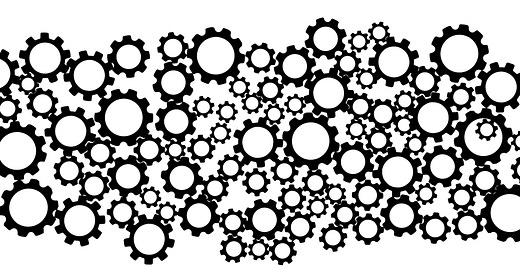Patterns emerge in retrospect. Looking back over these past pieces, I see a thread I never planned—each idea flowing naturally into the next, forming an unintended sequence.
It began with seeing management as craft—not a science to master, but a practice to hone. This view led organically to understanding leadership as poetry, shaped more by rhythm and flow than rigid structure. From there, I explored chaos, both external and internal, not as a force to control but as waters to navigate. And then I questioned movement itself—what truly propels people forward? Not external motivation, but the intricate web of motives already at play within us.
And then came time.
Perhaps time was always the underlying current. Clock Time versus Craft Time wasn’t just about scheduling—it was about how we inhabit time itself. Do we push against its flow, or work within its rhythms? Does quality emerge through control, or through finding our natural cadence?
But these explorations reveal something deeper—they haven’t just been about work, leadership, or time. They’ve been about learning to work with my own mind.
Two worlds shaped my thinking, each pulling in its own direction. Business and finance taught me to extract value swiftly, to cut to the essence without hesitation. Academia taught me another way—to build ideas methodically, to ground every insight in what came before, to let understanding unfold at its own pace. For years, I felt torn between these approaches, as if my writing had to choose: be swift and incisive, or thorough and precise. As if clarity could only come through efficiency or exhaustiveness, but never both.
Only recently have I understood that my mind charts its own course. My writing, always an attempt to clarify thought, is more art than method. I show up, engage with ideas, and hope inspiration joins me. Above all, I seek to connect, to offer something meaningful to others.
These days, I find myself in a fertile middle ground. I want my writing to be friendly, open, welcoming—to feel like an invitation into a conversation. And yet, it still feels linear, formal, maybe even too academic. I don’t think that tension will disappear overnight, but I wonder if this—pausing now, pulling back the curtain, sharing the process itself—might be the way forward. Maybe by weaving moments of reflection into the fabric of ideas, I can make room for deeper connection while honoring the complexity of thought.
My mind doesn’t follow linear outlines or neat frameworks. Instead, ideas coalesce as connections form, each emerging as another settles into place. At their best, they build upon each other, creating depth—I hope—rather than mere accumulation. Often, the pattern only becomes clear in retrospect—when I pause to see what has been forming all along.
If there’s a unifying thread here, it’s about working with rather than against—with craft, with chaos, with human nature, with time itself. This realization opens new questions:
If time shapes craft, what shapes mastery?
If experience alone isn’t enough, what transforms doing into knowing?
The answer, I suspect, lies in the spaces between action—in what we discover when we pause.
In reflection.
And that’s where I go next.
So, I invite you to pause here with me. To step back, trace the thread, and see where it leads you. Because perhaps, in reflection, we find not just clarity—but connection.
See you next week!
==



